Space is something that people probably don’t think about that often unless they’re interested in it; most people believe that we really don’t know that much about it. While it is true that there is no way we could ever explore all of space, conceivably, it might shock a lot of people to find out how much we already know.
In fact, we know more about space than we do our own oceans. Even still, space is beautiful and full of mystery. There are galaxies, stars, planets, and a whole slew of other things out there that we can see in our own sky or through a telescope and all of it is amazing. New planets have been found just within the last year.
There’s Water Everywhere!
We used to believe that Earth was the only planet with water but we have since found that there is water everywhere in space. Even though research has slowed down considerably, we are still discovering new things about the great beyond all the time. That just goes to show that we really don’t know what is out there.
Perhaps all of the mystery and futuristic imagery associated with space is what continues to stoke the longstanding pop culture fascination with it. Whether it is the galaxy print fad of the mid-2010s or the ongoing fascination with the potentiality of life on other planets, it’s something that people are drawn to.
Space and Pop Culture
There are hundreds of movies about space, along with hundreds of songs, and even dozens of video games. Two of the most enduring television shows in history, Dr. Who and Star Trek, have space as the main focal point of the show. Science fiction as a genre dates all the way back to the second century.
Chronicling space research is something that is a little bit difficult but we know for sure that astronomy, the earliest research, predates all reliable recorded history. The first telescope was invented back in 1608 and scientists have been making progress since then.
There were several unsuccessful launches of unmanned spacecraft that took place after World War II; the first successful launch was in 1957 when the USSR sent up their first satellite.
The First Men in Space
The USSR is also credited with the first manned spacecraft to be launched into space. The flight took place in 1961 and Yuri Gagarin took one orbit around the world before returning.
They were also able to land unmanned craft on the moon and launch successful orbital satellites throughout the ’60s. Apollo 11, sent up by the United States in 1969, marked the first manned landing of a spacecraft on a celestial body. This was when man first landed on the moon.
From 1961 up to 2015, spacecraft were sent from American space stations up to orbit all of the other planets in our solar system. There have also been several other crafts sent to other planets; the earliest one was the landing of Verena 7 on Venus. That took place in 1970 and it only transmitted data for a few minutes before failing. Successful missions wouldn’t come for decades after, but they did come along.
Now, we have space stations, rovers on other planets, and plenty of other tools in our arsenal to keep exploring. So, space research has come a long way and it seems like there is always something new and interesting that we discover, even if we’re not actively sending anyone on space missions for now. Even with all of the advancements that have been made, it seems like commercial space travel is still a ways off.
Pleasure Trips Through Space
In 2019, it was announced that NASA intended to have commercial space flights available for single passengers to go to the International Space Station. It’s unclear how much progress was made towards that goal; however, the cost would be about $35,000 per traveler. In light of that, most people here on Earth will only ever see space through a telescope. Even more people may never even decide to take a look.
Because of that, we’ve decided to round up 50 amazing facts about space. Whether you consider yourself something of an expert or you have no idea what’s going on out there, you’ll hopefully learn something new throughout this article (and have some impressive ammunition for your next trivia night!).
Space Isn’t Technically That Far
Whenever we think of space, we tend to think of it as being really far away. There is some dispute about where space truly begins but most experts agree that it starts at something called the Karman Line.
This line is an invisible boundary that is just over 60 miles above the surface of the Earth. Technically, you could drive there. The average cruising altitude of an airplane is between five and seven miles above the surface of the Earth, which means that if you have ever traveled by plane, you’ve been about one-tenth of the way to outer space.
Space Is Very Quiet

One thing that is kind of trippy about space is that there is almost no sound. We can hear sounds because of the vibrations that they make, and those vibrations have to travel through a medium in order for them to get to us. The vibrations affect the molecules in the medium and eventually reach our ears.
There’s no medium like air or water in space for noises to travel through and there are very few molecules or atoms to vibrate, so there is technically no sound throughout most of outer space. Sounds can still be heard inside of shuttles, though.
But Some Things Make Noise Up There
Even though we said that the majority of deep space is silent, there are still some things that make sounds up in space. The sounds in space are not traditional sound waves, though. Instead, all of the noises that have been captured from outer space were captured as radio waves by different types of equipment.
When those radio waves are transmitted back to Earth, scientists have historically converted them to sound waves to give them a listen. These noises can come from strong magnetic fields, plasma waves, and sometimes, particles hitting the craft that is collecting the radio waves. Some of them sound pretty eerie.
Space Is Mostly Very Cold
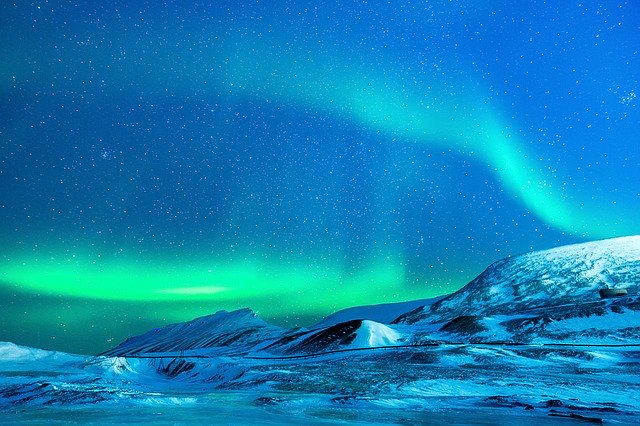
You would think that because some of the planets are so hot that we could never conceivably travel there that space must be pretty hot.
This is true in some ways; the sun’s rays can hit celestial bodies and warm them up. There are also other stars that emit warmth because they are balls of hot gas. But, space overall is pretty cold. Space is considered a vacuum, so it really has no temperature.
But, far away planets like Pluto are not close enough to get any of the sun’s rays, so the surface of the planet stays about -400 degrees Fahrenheit. Some areas of space can be as cold as -460 Fahrenheit depending on their distance from a star.
Even in between stars, the balls of gas that float in space stay around that temperature. Astronaut suits have special heating and cooling systems to help keep the temperature inside the suit regulated.
Space Is Kind of Stinky
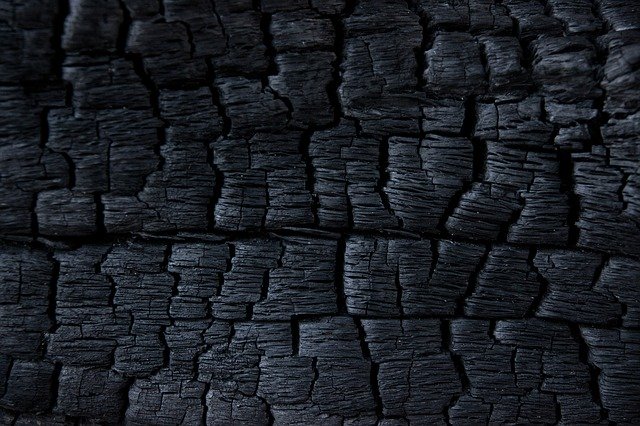
This fact is something that we think is a little bit unfortunate. Because space is technically empty, you wouldn’t think that it smells like anything. As it turns out, that’s vastly untrue.
There is no air in space so it isn’t like astronauts are able to take their helmets off and get a sniff, but many of them have commented on how their suits smell when they return. Most of them have said the same thing: there is a burnt, metallic, and quite strong and unpleasant odor that comes off their suits when they get home.
While that is true, scientists also know about the gases that are floating around in space. For instance, the galaxy we live in has a cloud of ethyl formate, which is a compound we’re pretty familiar with on Earth. It gives raspberries their taste and smell. So, it is conceivable that some parts of space may not smell as bad if we were ever able to sniff them.
Thomas Harriot Was Actually The First Person to Look Into Space
Your history class may have taught you differently, but it turns out that a man named Thomas Harriot was the first person to ever look into space with the use of a telescope. The first drawing of the moon was done by Harriot in July of 1609.
Of course, this was only just a few months before the well-known Galileo Galilei, who pioneered early astronomy. Even though it was by a small margin, Harriot was, in fact, the first.
Harriot was able to look first because he was able to afford a telescope back in those times. Galileo was not able to afford one, so he ended up building his own. He made significantly more discoveries than Harriot, but Harriot was the first person to look into space as well as create maps of the moon.
Alan Shepard Was The First American to Go To Space
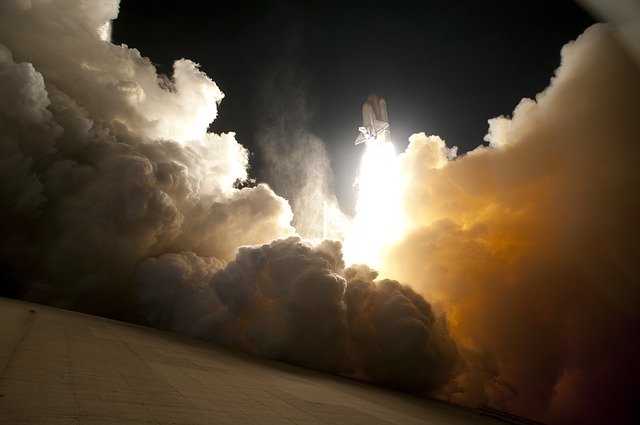
In the same year that the USSR made its first manned mission to space, America did the same. In May of 1961, a man named Alan Shepard became the first American to ever travel into space. This mission wasn’t as ambitious as the USSR mission that took place in the same year, though. Shepard named the capsule that he was in Freedom 7, and he flew just over 110 miles upwards into space before coming back down.
Even though his flight lasted just over 15 minutes, it was widely considered a success as it went smoothly and Shepard survived. Later, in 1971, Shepard took part in the Apollo 14 mission and was able to walk on the moon. He worked with NASA for over a decade in total before leaving at the age of 51.
A Full Space Suit Costs $12,000,000
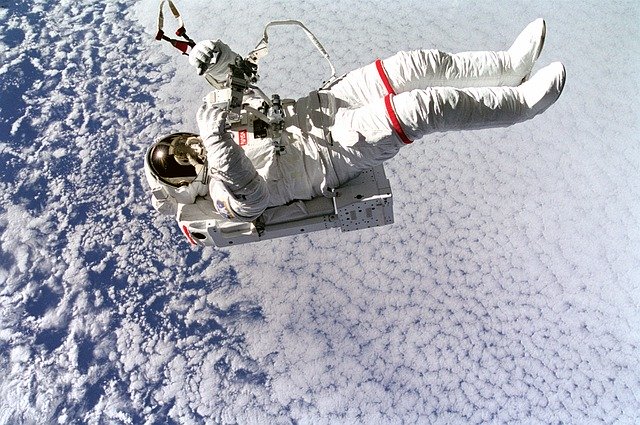
When people talk about the cost of space travel, their minds usually go to the cost of transporting the shuttles. The transport vehicles use gallons to the mile of fuel as opposed to the other way around. Another expensive part of space exploration that doesn’t get a lot of the same attention, though, is space suits. They cost roughly $12 million.
The reason that spacesuits are so expensive is that they have to be expertly constructed every step of the way to ensure maximum safety and efficiency. There are dozens of expensive materials that are all put together to form a 14-layer suit and, of course, there is a lot of other technical equipment that goes along with it.
Each layer has a different function. These include temperature control, holding oxygen, making sure it is tear-resistant, and more. Each suit, once completed, weighs almost 300 pounds on Earth.
Humans Could Survive Up To 30 Seconds In Space
It’s easy to balk at the cost of an astronaut’s suit but it’s important to remember the cost of not wearing one at all. There is no oxygen in space, first of all. Secondly, there is the fact that space is a vacuum. Because of that, if your lungs were full of air in space, they would burst. As long as there is no air in your lungs, you could survive a maximum of 30 seconds in space with no protective equipment.
The thing that would end up killing you is the lack of oxygen. However, it is possible that your eardrums could burst and even your saliva could begin to boil in your mouth before you lost consciousness. Space is a dangerous place without the proper protective gear!
There Are Laws In Space

As crazy as it seems (especially since some places on the planet don’t technically have laws), there are laws in space. The United Nations is in charge of something called the Outer Space Treaty, which was introduced in 1966. It became effective in October of the following year.
This treaty is an agreement that was reached by several countries. It isn’t very explicitly laid out because there is not a whole lot that needs to be governed up there. However, it does outline that everyone can explore space if they so choose, no one nation can claim space as their own, no weapons are allowed in space and several other things.
It also says that celestial bodies can only be used for peaceful purposes and that each state is independently responsible for any craft or crew that originate from their state.
Sweating and Crying Don’t Work In Space
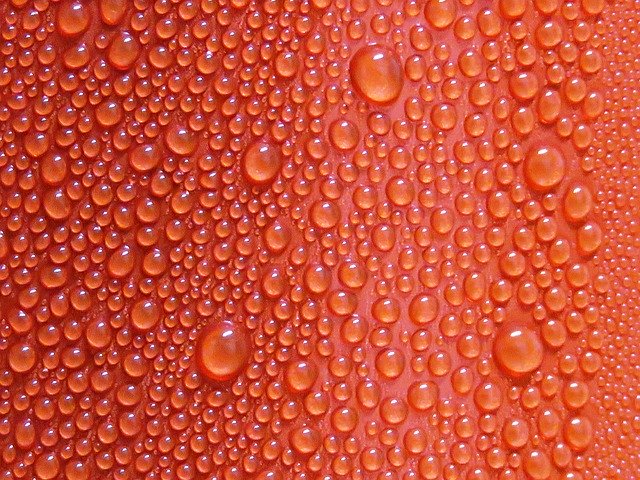
The human body loves to be balanced. We have acclimated to the gravity and the environment on Earth perfectly. In space, this isn’t so true. Things just don’t work the same way in outer space when it comes to our bodies.
The pressure differences can cause body fluids to react differently and cause blurred vision, excess gas because you can’t burp, and more. One of the strangest things about space is that you can’t sweat or cry.
Your body will still make sweat and your eyes will still make tears, but the lack of gravity doesn’t allow these liquids to roll off your body. When it comes to sweat, it ends up clinging to the astronauts’ bodies and they have to towel it off. Tears also stay in the eyes and end up collecting so much that you can’t see. The unfortunate thing about that is that tears have a pretty high salt content, which can irritate the eyes even more.
An interesting tidbit is that sweat that is toweled away after the necessary exercise that astronauts must do is collected and converted into drinking water later!
Only Three People Have Died In Space
Over 550 people have traveled into space in the name of science and with the way that people are constantly reiterating the dangers of outer space, this fact may shock you. Only three people have ever died in space. Their names were Georgi Dobrovolski, Vladislav Volkov, and Viktor Patsayev.
The USSR sent the crew of three up to the world’s first space station in 1971. The mission was called Soyuz 11. The crew was able to successfully board the space station and the entire mission lasted a little more than three weeks. They spent 22 total days on the space station and had a fairly smooth journey back until the worst happened.
When the shuttle was preparing to re-enter Earth’s atmosphere, the crew’s capsule suddenly depressurized and took the lives of all three men.
The Moon Might Be Smaller Than You Realize
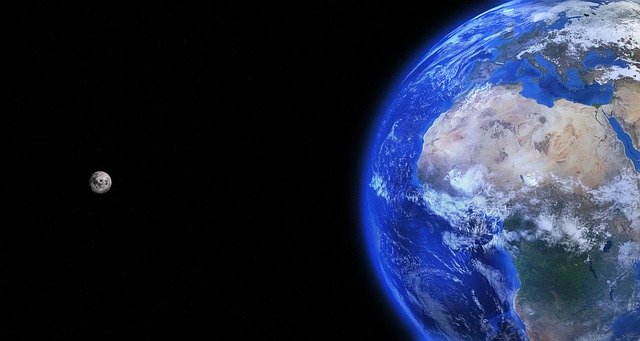
The celestial bodies that we are most familiar with here on Earth are, of course, the sun and the moon. It’s easy to assume that the moon must be pretty large considering how well we can see it in our sky but, it is probably way smaller than you think. The circumference of the moon at its equator is roughly 6,800 miles; Earth’s is exactly 24,901 miles.
A more simple example would be to consider the surface area of the moon, which is a little bit less than 15 million square miles. Even though that seems unfathomably large, it is actually less than a quarter of the surface area of the pacific ocean! It is also smaller than Asia.
The Moon Is Also Farther Than It Seems
The moon and the sun can look the same size in the sky but it might blow you away to consider the actual size differences between the two celestial bodies.
If Earth was the size of a nickel, the moon would be about “the size of a coffee bean” according to NASA. The sun would be the size of a standard front door. With that in mind, it seems like the moon would be pretty close to Earth for us to see them the way that we do. In fact, it’s about a quarter of a million miles away.
Depending on which route you take, it can be a little closer or further away. In general, it takes a shuttle about three days to reach the moon.
There Is No Dark Side of the Moon
Perhaps one of the most unsettling things about space is that there is actually no dark side of the moon. We didn’t learn this about the moon until 2015, even though the other side of the moon has been regularly observed since the late ’50s.
A camera on the DSCOVR satellite caught a rare glimpse of the moon passing in front of Earth “during the day.” What they saw was a little bit shocking.
The side of the moon that faces away from Earth was still illuminated by the sun. In fact, it also has moon phases that mirror what we see here on Earth. The darkest parts of the moon in the images captured were actually on the sides of the moon, which were not reached by the sun at the time of observation.
The Moon Is Not Responsible For the Tides
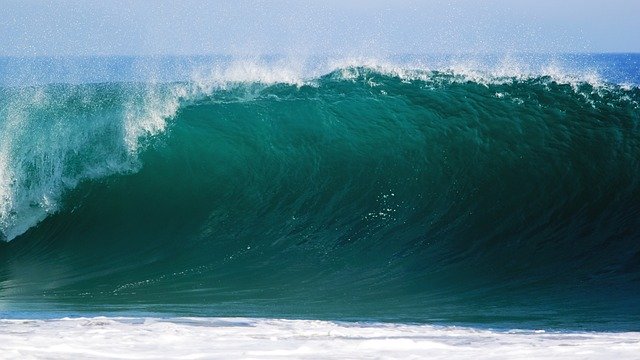
Many of us were taught that the moon’s gravitational pull is what causes tides here on Earth. However, it turns out that this is a mischaracterization of the moon’s relationship to the oceans.
The moon actually only has a fraction of the gravitational pull that Earth does and if that was responsible for the differences in sea levels, we would be able to see the same thing happening with all water. If the moon was responsible for the tides, you would even see them in your pool!
The moon still plays a part in the complex gravitational forces that cause the tides to occur but, they are not solely responsible as you may have learned in your science classes. Even the sun is at least 30% responsible!
The First Footprints on The Moon Are Still There
Along with a serious lack of gravity, the moon also lacks an atmosphere. There is no wind, water, seismic activity, or any type of weather that regularly occurs on the moon. There is still solar wind but the process of the moon’s surface being changed by their weather is so slow that the first footprints on the moon are still there.
If a meteorite were to hit the moon, it would rock the surface enough that the footprints would disappear but there are no other disturbances that have been able to wipe them away even after 50 years. Based on current scientific knowledge, there is no reason to think that the footprints left on the moon will ever disappear.
Earth Has a Second Moon (Sort Of)
So, moons are celestial bodies that act as natural satellites. They get close enough to become manipulated by the gravitational pull of the planet that they end up orbiting, and then continue to orbit those planets until something happens that knocks them out or destroys them. Earth has sort of a second moon. It’s not actually a moon, though.
In February of 2020, the Minor Planet Center discovered that there was a small asteroid that entered Earth’s orbit. It is less than 12 feet in diameter, so there is no way that it could be visible from Earth. In addition, this small “second moon” is likely to be temporary since it is so small. However, this wasn’t the first confirmed small celestial body that came into Earth’s orbit and it isn’t likely to be the last.
Iapetus, One of Saturn’s Moons, Is Multicolored
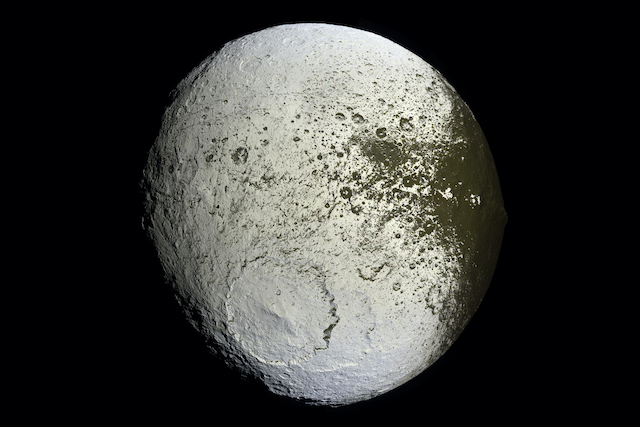
As you probably know, other planets have moons as well. Saturn’s moons were first discovered in 1672 by Giovanni Cassini. At that time, he discovered four of them; we now know that there are at least 62 moons and the planet may have as many as 150.
Iapetus is a unique moon because it is not spherical in shape and it is among the largest moons of Saturn. One side of the moon is dark in color and one side is much lighter. There are mountains on the moon that are covered with some kind of dark material and the lighter side of the moon is covered in ice, as far as we know.
There are also spots that are brighter because of the ice that they’re covered in, so this moon is multicolored and has polka dots in some places.
Saturn Isn’t The Only One With Rings
Saturn is also famous for having rings. It has the largest rings around any planet and they are made up of a variety of different kinds of space debris.
But, you may be surprised to learn that there are other planets that have rings and even celestial bodies that are not planets have rings. Back in 2014, an asteroid was discovered that had a system of rings.
It was the first celestial body that was ever found to have rings that wasn’t a planet. The asteroid is in our solar system and is positioned between Saturn and Uranus. It orbits our sun and it has been named Chariklo. It has two rings made up of space rock and they were most likely the result of some kind of collision.
Saturn Has Kittens

Sadly, not the cute and fuzzy kind that probably came to mind. In Saturn’s multiple rings, NASA identified what they call kittens. These are actually babymoons or even “moonlets” that are formed when particles in the rings clump together. They were discovered in 2007 and are believed to be temporary.
These kittens are the main reason that Saturn’s F ring, which is where they were located, continues to change its structure. Other than the fact that they are called kittens, another cool thing about them is that NASA gave Larry Esposito the task of naming these babymoons. He was the person who is credited with discovering the ring that the kittens hide out in all the way back in 1979.
The Largest Known Volcano is on Mars
Mauna Loa is the largest active volcano on Earth and it is located in Hawaii; it is technically taller than Mount Everest when measured from its base even though it is just about 4,200 meters above sea level. Mount Everest is 8,848 meters above sea level. Both of these pale in comparison to the biggest volcano ever, though. The largest volcano in the solar system, known as Olympus Mons, is located on Mars.
It is a shield volcano, a classification that it received based on its shape and that it shares with Mauna Loa. If Olympus Mons was on Earth, it would tower an insane 21,000 meters or more above sea level.
This means that it is more than twice the size of Mount Everest. It is also much wider; it would be able to cover a portion of America larger than all of Arizona.
Jupiter Is The Largest Planet In The Solar System
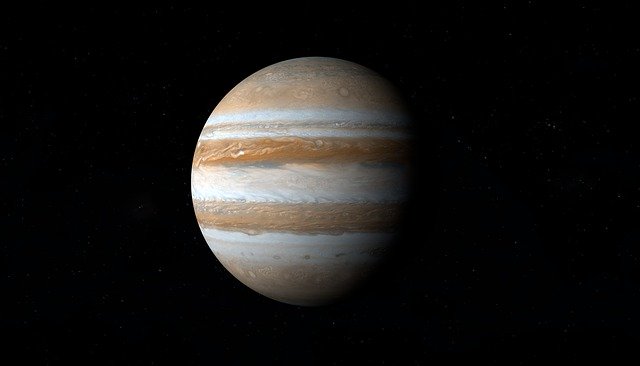
The planets in the solar system vary widely in size, and the largest of those planets is Jupiter. The most famous feature of Jupiter is the massive red dot that can be observed on its surface, and even just that dot is larger than the diameter of Earth.
Earth has a diameter that is less than a tenth of the diameter of Jupiter; however, the big red planet has a mass that is greater than 300 times the mass of our planet.
If you put all of the planets in the solar system together, Jupiter is still two and a half times larger by mass.
Mercury Is Shrinking
Mercury, even though it is larger than Pluto, is the smallest planet in our solar system. It is also getting smaller.
The reason that Mercury is getting smaller is that the crust is continuing to cool and contract over time and it is doing so at a faster rate than was originally predicted by NASA.
Scientists have known that Mercury was shrinking ever since the first fly-by mission took place in the 70s but it wasn’t until 2014 that another mission found further evidence and cleared up some confusion about the shrinkage.
So far, it has contracted by about four and a half miles. The steady contraction is causing a lot of different anomalies on the surface of the planet too, like scarps and wrinkles.
Venus Is Hotter Than Mercury
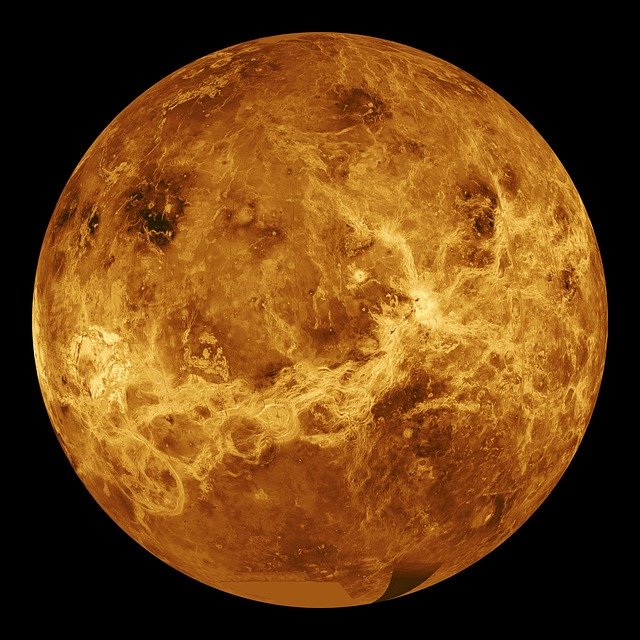
Mercury is obviously pretty hot; it is the planet that is closest to the sun. The title of the hottest planet in our solar system, though, actually goes to the second rock from the sun. Venus is about 864 degrees Fahrenheit on average, no matter where you go on the surface of the planet.
The reason that Venus is so much hotter than Mercury despite being further away is that Mercury is another planet that lacks an atmosphere.
The atmosphere of a planet is what allows it to trap heat so Mercury is unable to trap heat so even though it is receiving the most of it, it is losing it at a rapid pace into space. Venus’ atmosphere is very thick, so it can gather heat from being so close to the sun and doesn’t lose it as fast.
Days Are Longer Than Years on Venus
Venus is weird in another way, too. A day is defined by the rotation of a planet on its axis. On Earth, as you know, this is 24 hours. A day on Venus, meaning the time that it takes the planet to rotate on its axis, is the equivalent of almost a year on Earth! It takes 243 days in total.
A year is defined by the amount of time it takes a planet to make one full revolution around the sun, which is 365 days on Earth. Venus circles the sun in just 225 days. Because of this, it takes more than one year on Venus for a single day to pass on the planet.
The best possible explanation for how long it takes the planet to complete a rotation is because there is friction caused by the thickness of its atmosphere as well as the very intense winds on the planet.
Neptune Is Really Hot
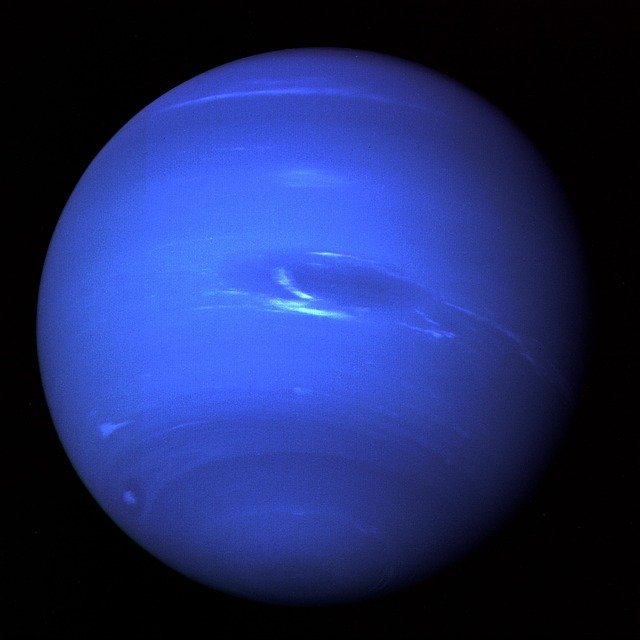
Neptune is a bright blue planet that is the eighth planet in the solar system. Ever since Pluto was given the ax, it is officially the last planet in our solar system.
It has a very icy atmosphere and features some of the most severe weather in the solar system. The surface of Neptune is still -330 degrees Fahrenheit but, the core of the planet is way hotter than you might think based on its appearance.
The core of this planet can get as hot as 12,632 degrees Fahrenheit and there are points on the planet (at the poles) that can get up to 18 degrees Fahrenheit. While 18 degrees is still way colder than it gets in plenty of places on Earth, imagine what it would be like if the poles were hundreds of degrees hotter than the rest of the planet here on Earth.
Uranus Is Sideways
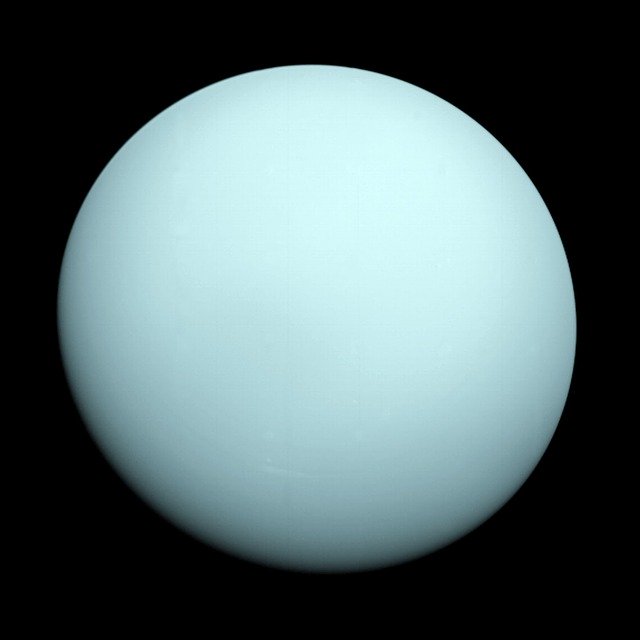
Every planet has a spin axis and they are all quite varied. For instance, Earth is tilted by about 23 degrees. Uranus is completely sideways based on its spin axis, which is tilted 98 degrees. It is the most tilted out of all the planets.
For a long time, scientists believed that Uranus was tilted by a single strong impact but they have since discovered that it must have been multiple smaller impacts that resulted in the planet tilting on its side. They determined this through the use of computer models and several tests run on these models.
Regardless of what caused it, Uranus can’t straighten itself back up so it just remains on its side. It wasn’t until 2011 that it was determined that it must have been the multiple impacts.
Pluto Might Have a Replacement
Pluto was kicked out of the actual solar system quite some time ago; it is a dwarf planet that used to have the ninth spot. It’s still there orbiting the sun, but they decided to stop classifying it as a planet several years ago based on its size. There has also been a lot of talk about a mysterious other planet that may be out there, called Planet X.
Experts believed for a long time that there was another planet in our solar system and that they had yet to find it. It turns out that this extra planet, a true ninth planet, does exist, based on evidence that was found by astronomers. It is much farther away from the sun than the rest of the planets in our solar system but it is orbiting the sun as far as we can tell.
Pluto Is Not Where Our Solar System Ends
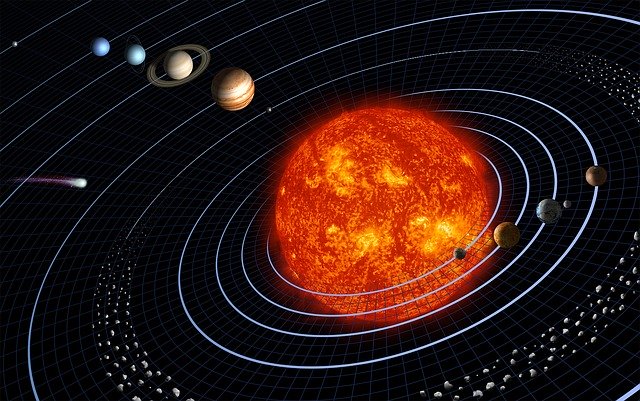
Similar to the last point, most people tend to think that our solar system ends after Pluto since it was the ninth planet for so long. However, the truth is that our solar system extends much further than you may have been led to believe. It is easier to not get into the technical aspects of it so we are often taught that it ends at Pluto.
With that said, the sun’s magnetic fields and gravitational influence stretches far beyond the little dwarf planet that we don’t count anymore.
Pluto’s orbit stretches as far as 50 AU from the sun. AU stands for astronomical units and it is a term that is used to describe distance in space because miles can become quickly incalculable (one AU is roughly 93 million miles). The end of the sun’s gravitational influence goes as far as something called the Oort Cloud, which is as much as 5,000 AU from the sun. This is the technical end of the solar system.
The Sun Accounts For Close to 100% Of Our Solar System
In space, most of the time, the size of something is calculated by its mass. This is true for celestial bodies like the moon, the stars, planets, and so on. When you consider the mass of our entire solar system, you find that the sun accounts for 99% of the total mass.
What this means is that if you were to add the mass of all of the planets, moons, and asteroids that are contained in our solar system, 99% of the total value comes just from the sun. So, even though the rest of the solar system is so much larger, the mass of everything contained within it combined is only equal to about one percent of the total mass.
The sun is so large that more than one million planets the size of Earth could fit inside. Its diameter is about 865,000 miles across whereas the diameter of Earth is a mere 7,917 and a half miles across.
The Sun Isn’t Actually Burning
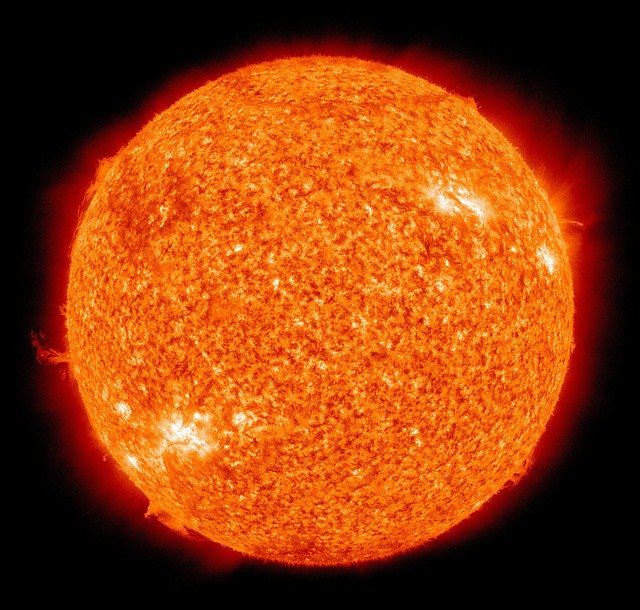
The sun is usually described as a great ball of fire, or a burning orb, but it isn’t burning. To explain it as simply as possible, burning is a chemical reaction that doesn’t change individual atoms that make up a particular material but instead, it just rearranges the electrons contained within those atoms.
That is vastly different than what is going on with the sun. The sun, and other stars, are going through a process of nuclear fusion that is constantly converting matter into energy. Because of the process going on, each element is changing on an atomic level, which makes this chemical reaction very different from burning as we understand it here on Earth.
Because the sun is constantly turning mass into energy, it does eventually burn out because it will run out of matter to convert. Most stars have a lifespan of billions of years, so we don’t have anything to worry about any time soon.
The Sun Isn’t Yellow, Either
Another sort of misconception about the sun is the color of it. It appears to be yellow when we observe it from Earth but it is actually white in color. The way that our atmosphere scatters light is the main culprit for the misconception.
Higher wavelength colors, like warm colors, do not get scattered the same way that cool colors do. So, when the white light of the sun penetrates our atmosphere, the cooler colors (lower wavelengths) are scattered. Because white light is made up of all wavelengths of all the colors, the remaining ones that aren’t filtered out by the atmosphere of Earth are the ones that come through and give the sun its warm-colored glow.
Solar Energy Could Power The World
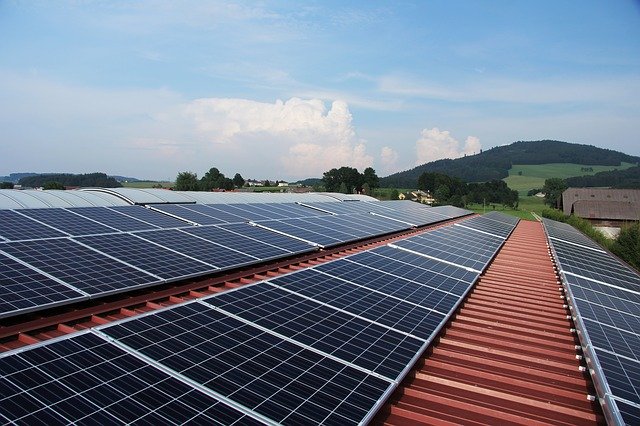
Solar energy has become a hotter topic in recent years as more people start to focus on efficiency and sustainability. The Earth will eventually run out of fossil fuels and one of the ways that science has found to help us continue to have electricity without being as dependent on these fuels is by converting the light from the sun into electricity. Solar power doesn’t account for a lot of energy use in the world, but it could!
The world uses about 22,000 Terawatt hours of electricity annually. The most recent estimates (which come from MIT, in 2011) say that the sun produces a total of 173,000 terawatts. This amount of energy is what is continuously coming to Earth.
So, if experts found a means to harvest all of our electricity from the sun, we would still have more than we could ever conceivably use. Research is always expanding, so this could be possible in the future.
An Astounding Bit of Math Makes Eclipses Possible
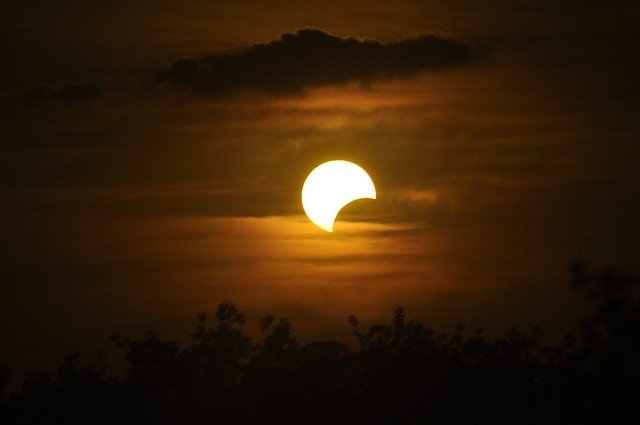
Earth is in what is called the “goldilocks zone,” aptly named because our distance from the sun makes it so we get enough light and warmth to survive but, we aren’t far enough away for the planet to freeze without the direct light of the sun hitting the surface. This isn’t the only way that Earth is shockingly perfect.
Eclipses are one of the most stunning phenomenons that we can observe from Earth that happen in space. The only reason that it is possible for us to observe them the way that we do, and the reason that the moon and the sun appear to be the same size, all comes down to math.
The moon happens to be 400 times smaller than the sun while the sun is 400 times further from our planet than the moon. If this wasn’t the case, the sun and moon would never perfectly eclipse each other and wouldn’t appear the same size in the sky when viewed with the naked eye.
The moon’s orbit is also slowly expanding, so whatever happens to inhabit Earth in a few million years will never get to see solar and lunar eclipses the same way that we can.
There May Be An Entire Planet Made of Diamonds
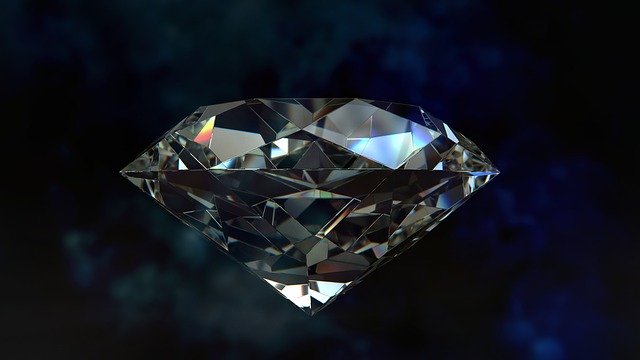
There are a lot of strange things in the world and there are a lot of strange things beyond it in outer space, too. In 2012, a team of researchers from Yale found an absolutely mind-blowing planet that is about 40 light-years from Earth that appears to be covered in diamonds.
The team found that there is a “super-Earth” that orbits a star in the constellation of Cancer that has a surface that looks like its surface is made up of graphite and diamonds. It is twice the size of Earth and has been named 55 Cancri e.
The planet doesn’t have any water or ice that can be observed and its surface is close to 4,000 degrees Fahrenheit. While it would be cool to swing by and stuff your pockets before heading home, the round trip would take about 1.4 million years.
Rainy Days Are WAY Worse In Space
55 Cancri e isn’t the only weird planet that has been found out there by any means. Another very interesting planet that astronomers have discovered is called HD 189733b and it is about 63 light-years from us. It has a similar color to Earth and it’s very pretty to look at, but scientists have discovered that it would not be a pretty place to visit.
The surface of HD 189733b is hotter than 1800 degrees Fahrenheit and the weather is horrific. This planet rains glass, sideways, with 4,350 mile an hour winds. Next time you’re annoyed by needing to carry an umbrella, remember that it could be so much worse.
This isn’t the only planet with extreme weather to speak of, though. On Venus, it rains sulfuric acid; on Saturn, Neptune, and Jupiter, it can rain diamonds. There are a lot of different kinds of precipitation that can occur on other celestial bodies.
There Is Actually Water Everywhere
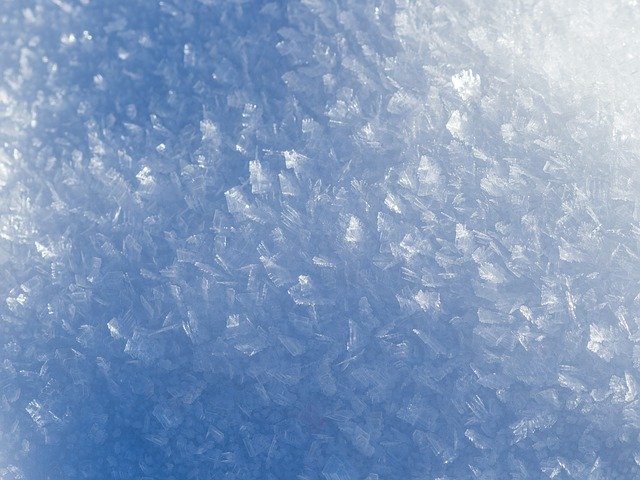
For a long time, the one thing that set Earth apart was the presence of water. It was widely believed that there was no water anywhere on other planets, which was the most concrete evidence we had that no other celestial body could sustain life like Earth. However, there is actually water all over the place out there.
Water was found on the moon in 2009 and there is significant evidence of water on Mars. While it has been billions of years since there was any water on Mars, it’s impressive to learn that it was there in the first place.
There is also a lot of ice in space, in the atmospheres of other planets and even on the surfaces of planets, moons, and more. Moons of Saturn and Jupiter are believed to have entire oceans hidden beneath the surfaces that we can see.
Evidence of water has been observed beyond the limits of our solar system and steam and ice are often discovered around stars and clouds in space. Liquid water remains to be seen out there beyond the limits of our atmosphere, but researchers will never stop looking.
Metal Permanently Bonds In Space
Here on Earth, we use a lot of metal in a variety of products and in construction. Most of the time, the metal we use is fused together using something called hot welding or fusion welding.
This type of welding requires the metal to be heated up until it becomes molten or completely liquid, allowing the materials to fuse together and they remain together once they return to their solid states after cooling.
There is also a process called cold welding, which is also known as contact welding. This takes place when two solid metals are touched together in a vacuum. With no particles between the two surfaces, they are able to permanently bond.
Because (as you’ve learned) space is a vacuum, this process happens instantaneously in space. It can’t happen on Earth because an oxide layer forms on metals. If you polished that layer away in space, the metals would cold weld immediately upon contact.
Spacecraft Have Been On Every Planet
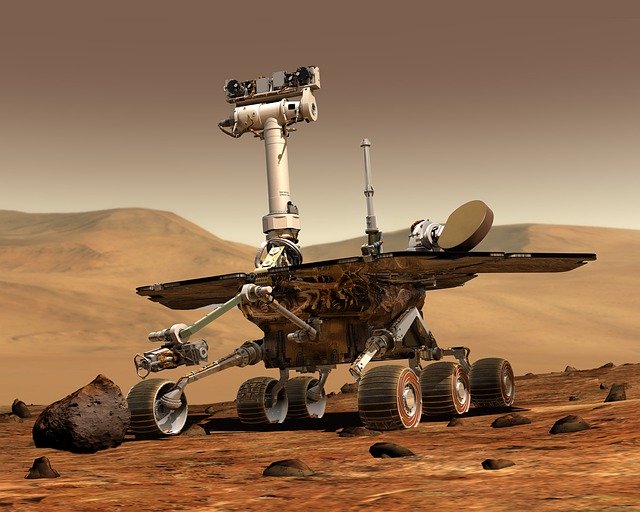
Over the past sixty years, we have been actively studying space as a society. In that time, we have only ever set foot on one other celestial body.
Humans have landed on the moon but have never been to other planets. There are problems with the distance of other planets, as well as the conditions on the planets and the limits of the technology and spacecraft that we have been able to create. Even though we still have these limitations and so much more to discover, we have actually landed spacecraft on every single planet in our solar system.
Most of the craft that we have landed has been at least somewhat successful and transmitted data for at least a short time. Other craft, such as the Mars rover, has lasted much longer.
Different sorts of spacecraft have been on every planet to collect and transmit data, which is amazing when you consider the fact that it can take about a decade for anything to travel to the last planet, Neptune. Spacecraft have also landed on the two dwarf planets in our solar system, which are Pluto and Ceres.
There Are Billions of Galaxies
Something that people seem to be aware of but don’t truly comprehend is the sheer number of other galaxies, which is estimated to be over 100 billion.
A galaxy is sort of like a chunk of space. Each galaxy contains gas, dust, stars, and the solar systems that revolve around those stars. Our galaxy, the Milky Way, has been estimated by some experts to have tens of billions of solar systems within it. About 500 of them have been discovered but there are billions of stars within our galaxy and any number of them could have solar systems.
There are galaxies beyond the limits of our own that are much larger. There are some galaxies that, from observation, appear to have trillions of stars in them. That means that there could be trillions of other solar systems in each one. And that means that there are potentially one hundred sextillion other solar systems. Spooky when you think about it.
Our Galaxy Is Going To Collide With Andromeda
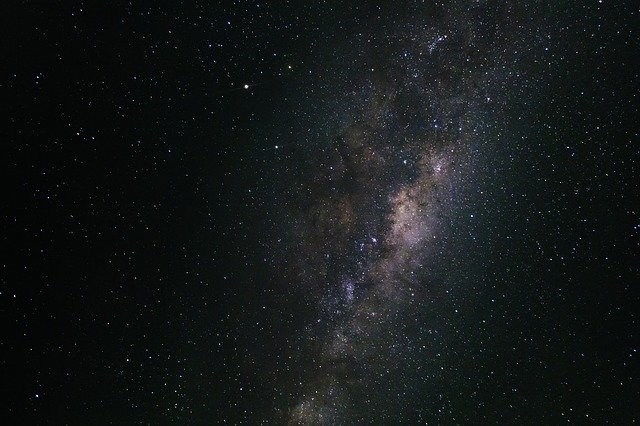
Our neighbor, galactically speaking, is called Andromeda. On nights where the moon is dark and you can find an area without much light pollution, you can view Andromeda with the naked eye.
If you follow the direction of the lowest star in the Cassiopeia constellation, you can see Andromeda as a hazy blue light just above the curve of the Andromeda constellation in the Northern sky. Right now, it is between two and three million light-years away.
NASA found in 2012 that our home of the Milky Way is headed straight towards Andromeda at a speed of 250,000 miles per hour. Gravity is pulling the two galaxies closer to one another and they will eventually collide and mold together to form something that could be completely rearranged. In Earth years, the two will collide in about 40,000,000 centuries.
We Don’t Know How Many Stars There Are
There is a lot of debate about how many stars there really are. The most current estimation is that it would take a single person close to 10,000 years to count all of the stars in our galaxy. This number is also highly contested, which leads to greater difficulty when calculating the number of stars that actually exists.
We have billions of stars. NASA claims that there is an incalculable number of stars that have not been accounted for even in the most state-of-the-art models but the average amount of stars believed to be in the Milky Way is about 400 billion.
To find out how many stars there may be, that number would be multiplied by how many galaxies we believe that there are. No matter how you spin it, even the lowest estimates are in the quadrillions. Those estimates are believed to be conservative and there is no way to gauge how true they are so there is no way to tell how many stars exist.
Stars Are Not Sitting Still
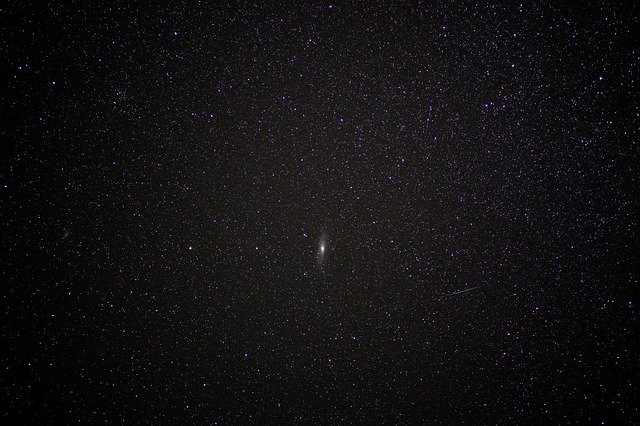
Stars seem fixed here on Earth even though we know that the planet is always moving. Most of the movement of stars that we can observe is happening because of Earth’s rotation and revolution around the sun. However, stars are moving too!
Stars can move for a ton of reasons. The galaxy that they exist in may be moving, the Universe is still always expanding, some sort of space debris could hit the star, and so on. Stars also have their own type of motion that can only be observed in stars.
Because they are balls of gas, they are constantly rotating around their own center of gravity and they are being pulled and shifted by the gravity of other celestial bodies that may surround it. Most of this movement can’t be observed in a single human lifetime.
Stars Actually Are Twinkling
Sometimes you can look at a star and it seems as though you can see it shimmering, flashing, or twinkling. Most people believe this to just be some trick of the light considering stars are so small and it is already dark out; however, stars really do twinkle. You might be a little bit disappointed to know that it isn’t exactly the star doing all the work, though.
Earth’s atmosphere isn’t static. That means that there are winds, debris, clouds, precipitation in our atmosphere. The density of our atmosphere changes as well as the temperature. All of these small factors can affect the way that light shines through our atmosphere, such as the light we get from the stars out in space. The atmospheric variations that we can’t see are what has an effect on the twinkling of the stars that we do see.
Stars Are Multicolored
Finding out the stars aren’t twinkling on their own may have been a letdown but we hope that this makes up for it. Stars are all different colors! This occurs for a multitude of reasons.
Stars are all made up of different gases and they’re not all the same temperature, so some can be brighter or larger or a different color altogether. The distance and direction that stars move can also affect the color that they appear in the sky for us. Stars also change color as they age.
The range of colors that stars can appear includes the following colors: a reddish-orange, a bright yellow-orange, pale yellow, pure white, pale blue, a very blue-toned white, and deep bright blue.
Neutron Stars Are Very Heavy
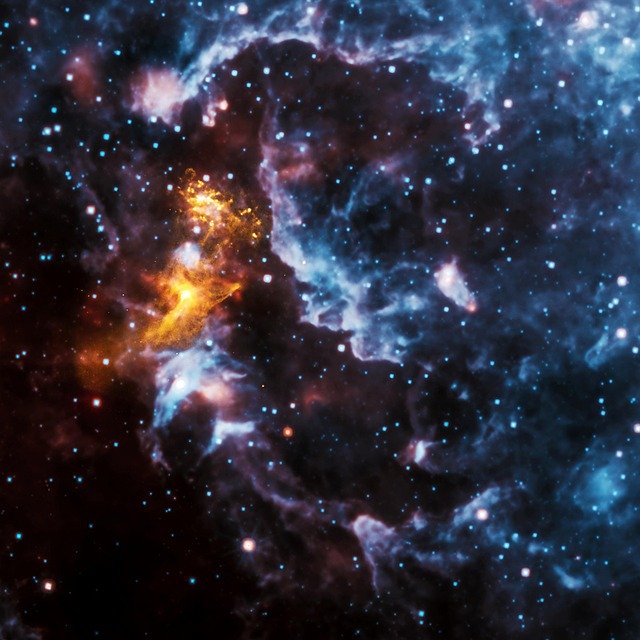
You may have never considered the weight of stars but, since they appear to us only as light, it makes sense that most people would assume that they were… well, light. However, there is a type of star called a neutron star that is anything but! These stars are what happens when stars much larger than our sun eventually collapse.
Stars are all made up of gas, mostly. However, if we could assume that we could get a tablespoon of a neutron star, that small amount of gas would weigh over a billion tons. This is because of the astounding density of this type of star. Just to compare, if you did the same thing with the sun, it would only be about as heavy as two gallons of milk.
The Largest Known Star Is In The Cygnus Constellation
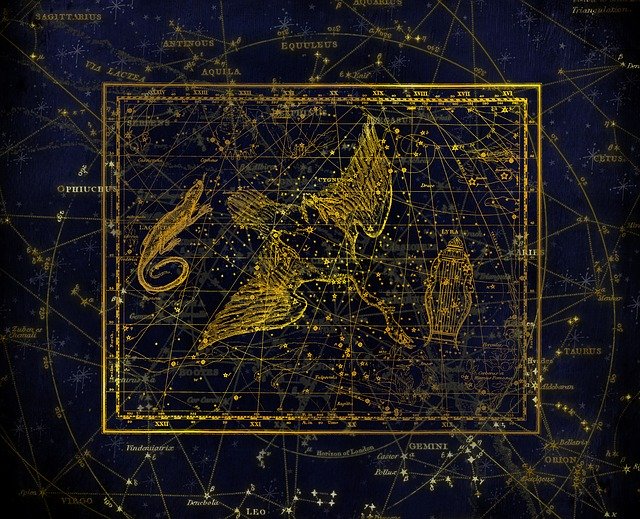
The type of star you just read about is the end result of a star collapsing that was larger than ten of our suns. The largest star in the sky is twice as large. Dereb is the tail in the Cygnus constellation, which depicts a swan. This star is the largest known star according to the most recent research.
It is also the brightest star in its constellation and among the top twenty brightest in the sky. You can see it with the naked eye, usually in the Summer. It is also on the Northeastern side of another group of stars, not a constellation, which is called the Summer Triangle. It is estimated to be about 60,000 times brighter than the sun.
As a bonus fact, the brightest star is Sirius. You can see Sirius by following Orion down and to the left.
You Could Never Reach The Edge of Space
If it were somehow possible for someone to travel all the way out into the stretches of space, they could never reach the end. Even the edge of our solar system is something that humans could never conceivably reach based on just how far away it is. Our solar system ends 46.5 trillion miles from Earth; our galaxy ends 15,578 quintillion miles from Earth.
Scientists aren’t even sure if the Universe has an edge. Most assume that it must because the Universe is expanding and it must be expanding into something, right? The entire idea is extremely confusing, even to the experts. However, there are a lot of scientists that believe that trying to travel to the edge of the Universe wouldn’t work because of the way that we understand physics.
Based on that information, trying to reach the end of the Universe would end up like an ant walking around a balloon. It is possible to end up back where you started, but there is no clear end because the surface is essentially unbounded.
Space Travel Led to Inventions You Use Every Day

Learning about all of the crazy stuff in space is cool but, just like the great beyond itself, it can be pretty nebulous. The far reaches of the galaxy and the Universe may not feel like things that touch your everyday life. Of course, that may be true. Even still, space exploration itself probably impacts your life more than you know.
Creating technology to advance space travel is a constant process that is full of innovation and truly transformative discoveries. A lot of the time, the technology that is created is repurposed into other things, too. There are also multiple things that don’t work the same in space, so different products have also been created to adapt to the environment that astronauts will use them in; these also are used on Earth every day.
Just a handful of the things that we now have as a direct result of space travel and research are camera phones, LED lights, water filters, handheld vacuums, insulation, wireless headphones, and laptops.
More pivotal things, like prosthetic limbs, CAT scans, and baby formula are all also the end result of space travel and the research and innovation that drives it.

